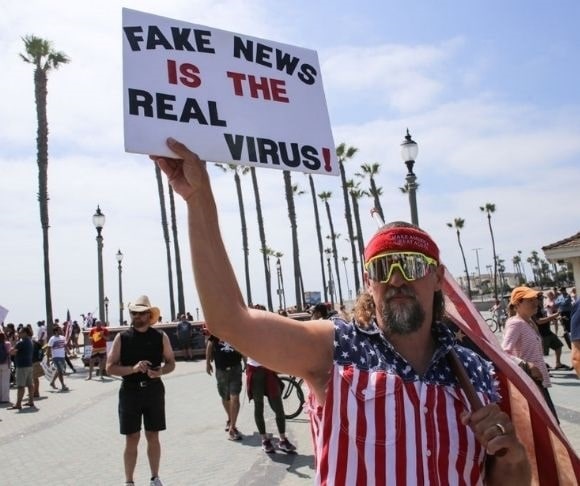Have you seen a photo or watched a video online that you weren’t totally sure was authentic? Your hesitations are valid and likely to grow in strength. Over the last few years, online scammers have honed the art of creating of deepfakes. Experts warned us to expect realistic and frequent fraudulent photos and videos on social media, and the Russia-Ukraine war proved them to be correct. Eventually, we will reach a point when it is nigh impossible to pick out the difference between a real video and an artificially crafted one. The American people, and the world, must prepare for the distribution of high-quality deepfakes during international events, such as this present war and US elections, aimed at manipulating the public.
The Zelensky Fake
[articlepoll align=”right”]The fight between Russia and Ukraine has undeniably included information warfare. The Russian government and its supporters are at odds with the rest of the globe to paint their own depiction of the war, Ukrainians, and Russia’s rights and intentions. The world has been bombarded with anecdotes, photos, and videos through the media from both sides, and it’s nearly impossible to discern what’s real.
Deepfakes make this all the more challenging. They are a form of artificial intelligence that utilizes deep learning to craft images and videos of fake events. One in particular, a video of Ukrainian President Volodymyr Zelensky, made the social media rounds and fooled millions before it was debunked. It was even posted on a reputable Ukrainian news website by hackers. The minute-long clip portrayed Zelensky telling the military to lay down their weapons and surrender to Russia.
It is unclear who crafted the deepfake, but Ukrainian officials expected manipulated images and videos to be used as part of this information warfare from Russia. But how could anyone tell this was unauthentic? Some noted that Zelensky’s accent was slightly different, and his voice and head did not appear natural upon a detailed look. Once identified as false, it was taken off Twitter, Facebook, Instagram, and YouTube; however, it made and continues to make its rounds through Russian media.
Tool of Information Warfare
Hany Farid, an expert in digital media forensics and professor at the University of California- Berkely, suspects this to be “the tip of the iceberg” for deepfakes. For perhaps the more tech-savvy younger generations, it is easy to notice something off about a deepfake video immediately. But for most people around the world, that is not the case.

(Photo by Stanton Sharpe/SOPA Images/LightRocket via Getty Images)
Sam Gregory of Witness, a human rights group specializing in authenticating media during crises, noted that “the deepfake is not very well done.” He applauded the Ukrainian government’s warning to the world that fake videos and photos would come. However, even though this deepfake is not the best we have seen, Gregory noted that it is good enough to cast doubt and make people hesitate.
It may cause some to question other videos of Zelensky or from Ukraine, moving forward. That is why deepfakes are so volatile and unique: They can sow doubt, fear, distrust, and suspicion into our social fabrics. It seems inevitable we will eventually reach a point where it becomes impossible to identify the differences between a real video and a fake one to the naked eye.
Future Use
World leaders will undeniably be a target for deepfakes. Zelensky was tagged with a subpar edit, but others may not be as lucky. Myanmar’s former leader, Aung San Suu Kyi, was overthrown by a coup from a military government that accused her of corruption and used a fake video depicting a government official held behind bars claiming he gave Suu Kyi cash and gold. The deepfake wasn’t the heart of her downfall, but it was undoubtedly a contributing factor.
With better timing and a few technical adjustments executed by the right experts, a deepfake can become a viciously powerful political weapon. The United States has seen foreign countries interfere in our elections, particularly Russia, China, and Iran. We suspect that behavior to continue through 2024 and this year’s midterms. Deepfakes are here, and they’re only going to get better. America and the world must be ready.
~Read more from Keelin Ferris.




